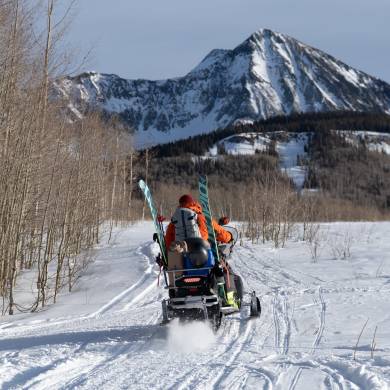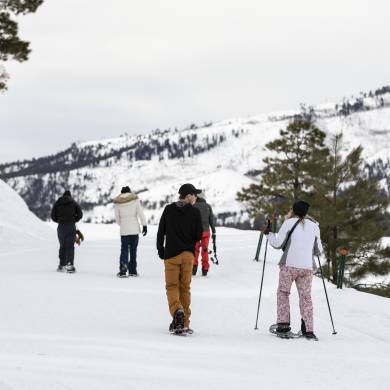- Home
- Places to Go
- Downtown
- Lakes
- Mountains
- Museums
- National Parks and Monuments
- Rivers
- State and Local Parks
- Trail Systems
- Wilderness Areas and Forests
- Home
- Things To Do
- Agritourism and Farms
- Arts
- Attractions
- Family Friendly
- Guides
- Health, Spas, and Wellness
- Outdoor Adventure
- Scenic Drives
- Shopping
- Home
- Lodging
- Bed and Breakfasts
- Cabins
- Campgrounds and RV Parks
- Hotels and Motels
- Lodges
- Vacation Rentals
- Home
- Eat
- Bars, Distilleries, and Wine
- Breakfast and Brunch
- Breweries and Grills
- Casual and Family-Friendly Dining
- Coffee and Tea Shops
- Farm-to-Table
- Fine Dining Options
- Food Trucks
- International Dining
Climbing and Bouldering
Durango and the surrounding terrain are intriguing areas for aspiring and experienced climbers alike.
In town, there aren't many climbing opportunities, but there are those who can help you find them. The local recreation center has a climbing wall for beginners to get used to climbing in a safe environment and learn how the equipment works. Several outfitters in town can sell and rent climbing gear to those who don't have any. Some also offer lessons or can direct you to those who can.
Just outside of town is where most of your climbing chances lay. The area has various rock types to choose to range from softer sandstone to craggy granite to weathered limestone. Each class has their own advantage and unique flavor depending on your preferred style of climbing and the challenges you seek out.
If you are looking to challenge yourself with a problematic climb, there are giant cliffs with overhangs and rugged grips.
There are scenic overlooks you can ascend to watch the sunset or view nearly untouched areas of nature.
If you go out to look for them, Durango abounds with climbing opportunities.
Places to Go Rock Climbing
Sailing Hawks
Just North of Durango, as part of the Dalla Mountain Park Trail system, lies The Sailing Hawks, a local hiking trail and climbing spot. Local climbers have known the area and its surroundings as "the secret spot" because of the great climbing opportunities.
The trail itself is barely a mile long but scattered all around the path is a collection of magnificent sandstone boulders. Each boulder is an excellent specimen for a type of climbing known as bouldering. Bouldering, as the name suggests, is where you find a large boulder and climb up it with just the naturally formed holds and ledges.
Turtle Lake
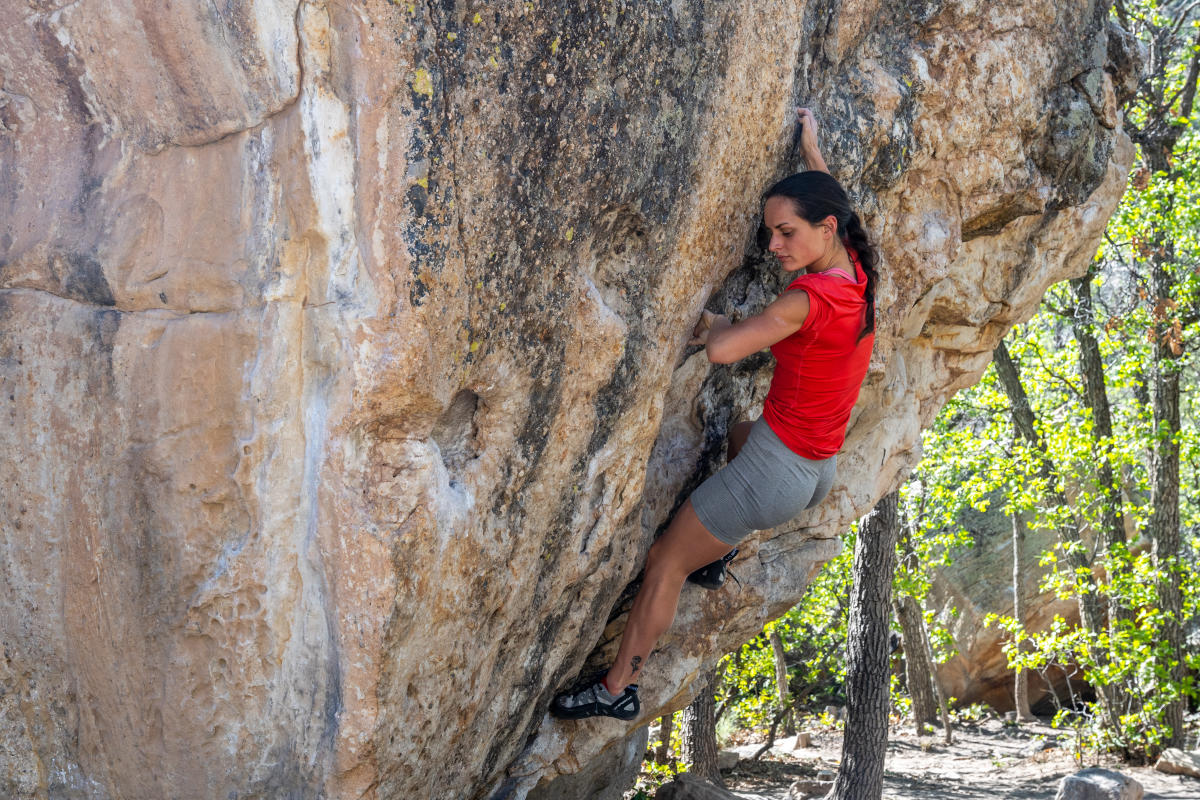
Known primarily for the colorfully named bouldering climbs in the area as well as a few traditional and sport climbing areas, is Turtle Lake.
Despite the name, there isn't much of a lake in the area, nor are there many turtles. But what is, there is an excellent selection of sandstone boulders and cliffs to choose from to make your ascent.
The weather and water over the centuries have worn grips and paths up the rock faces that an observant climber can take advantage of. Making your way up and down a sun-warmed boulder can be a great way to spend the day.
Cascade Canyon
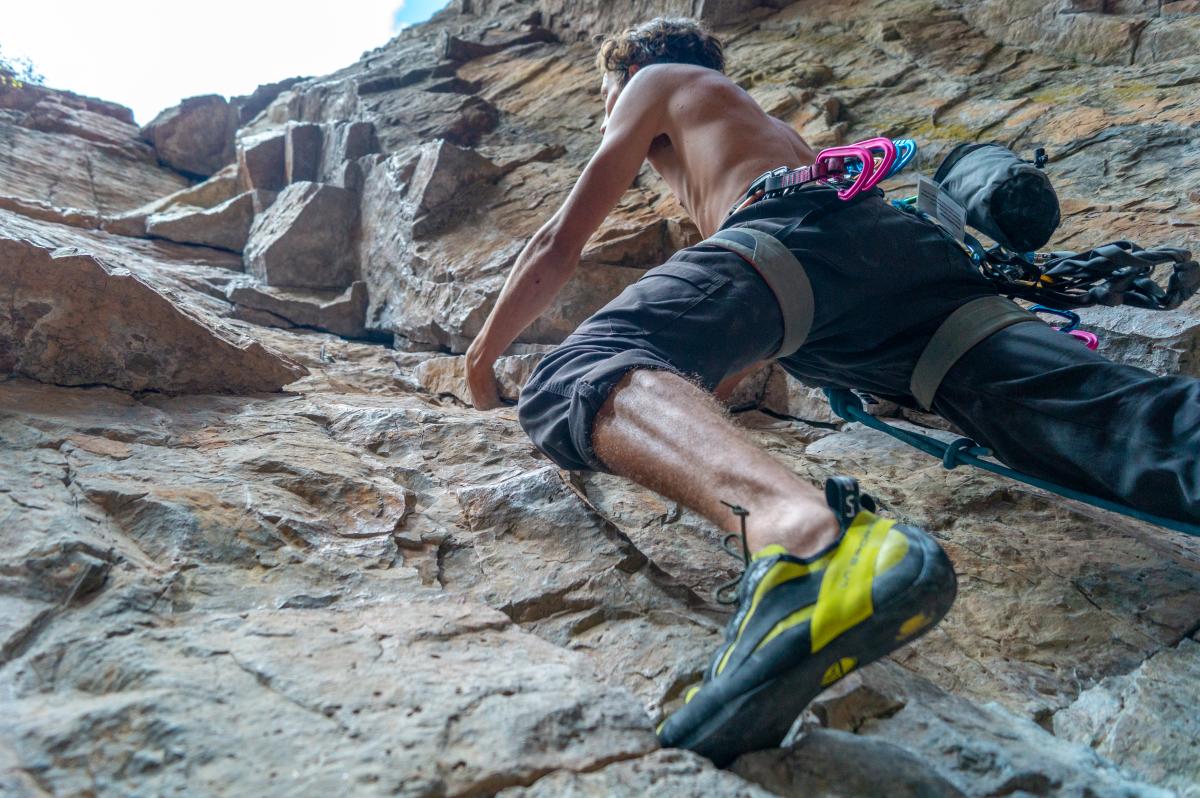
If you are looking for a great series of walls to climb near a beautiful water feature, it's hard to find a better spot in the Durango area than Cascade Canyon.
A small tributary has carved the canyon through the local mountain limestone for hundreds of years. The climbing trail leads to one of the hidden gems in the area when; after your hours of climbing or walking, it ends at a fantastic pool and waterfall.
Spending a warm summer day on a fulfilling climb and then stopping for a break at a crystal-clear waterfall is an almost otherworldly experience.
X-Rock
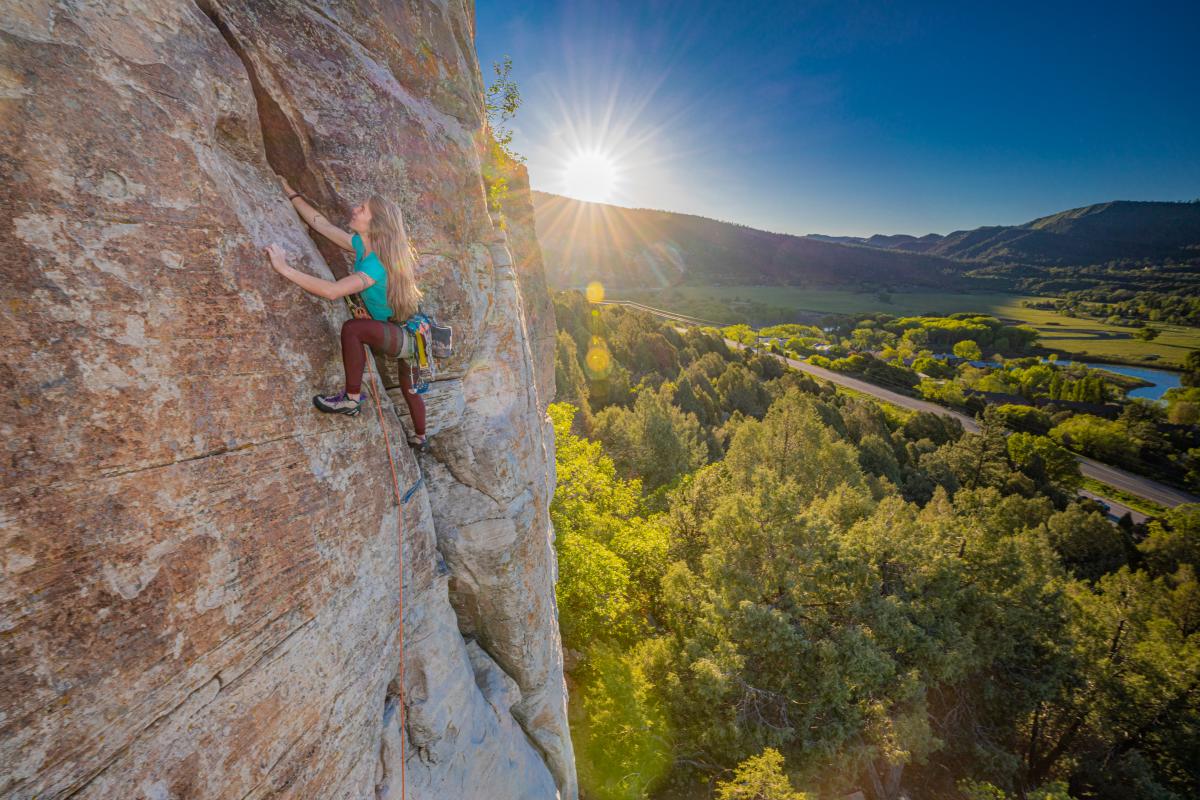
One of the most popular spots in the Durango area for climbing is X-Rock.
X-rock is a smaller sandstone crag located just North of town.
What makes the spot so popular is its variety of options and convenience. The crag can be climbed year-round in any season with the proper equipment. It offers routes for sport, traditional, and bouldering climbs from slabs of rocks to cracks between.
Local climbing schools use X-Rock as a lesson area because its variety of conveniences give new climbers plenty of variety and learning experiences.
East Animas Overlook
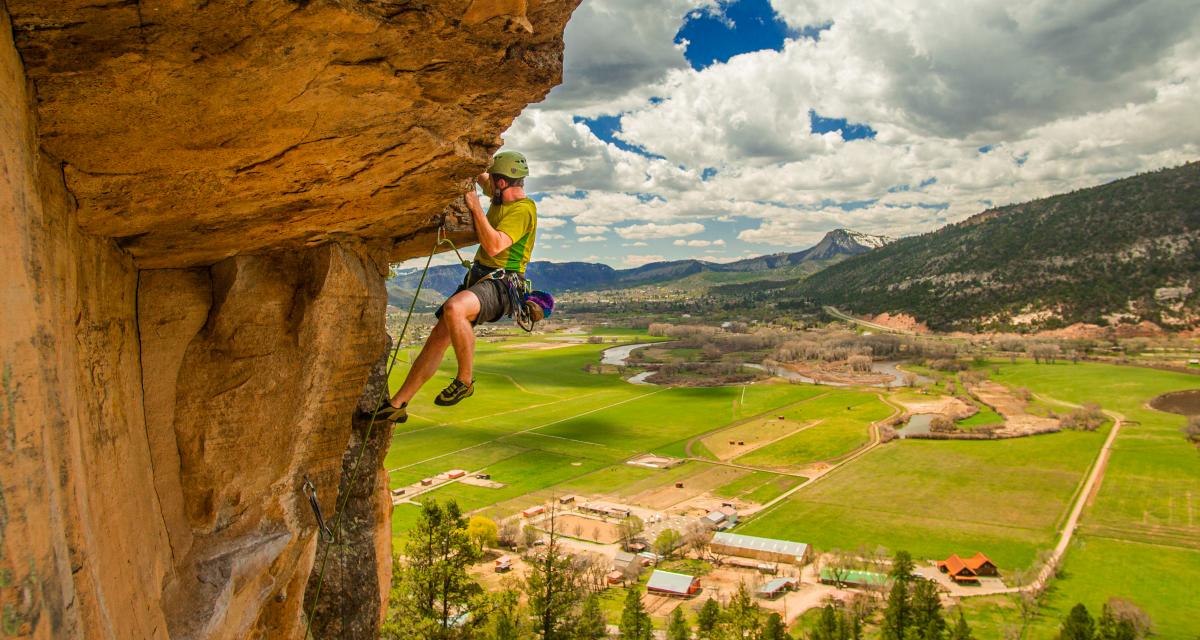
Another all-season climbing area in the Durango area is the East Animas Overlook and Climbing area. With the proper equipment, you can ascend and descend the sandstone cliffs the area is known for.
The cliff is west facing, so as the day passes, it starts off in shade before getting sunny in the afternoon. As you dangle from the cliffs, you can get a fantastic sunset view in the late evening.
The area is primarily a traditional climbing face, so proper climbing equipment and experience or an experienced person is recommended.
Lemon Reservoir
If you want a different climbing experience than the standard sandstone and limestone typically found in the area, climbing near Lemon Reservoir is an excellent alternative.
Just a little North of Lemon Reservoir lies a canyon carved from granite by the river that feeds the reservoir. The high-standing cliffs make for great climbing in the summer and fall because you can chase the shadows as you climb to stay cool on a hot day. The rock's craggy nature makes it one of the best granite climbs in the area, and the river rushing below makes you feel like an action movie protagonist.
Golf Wall
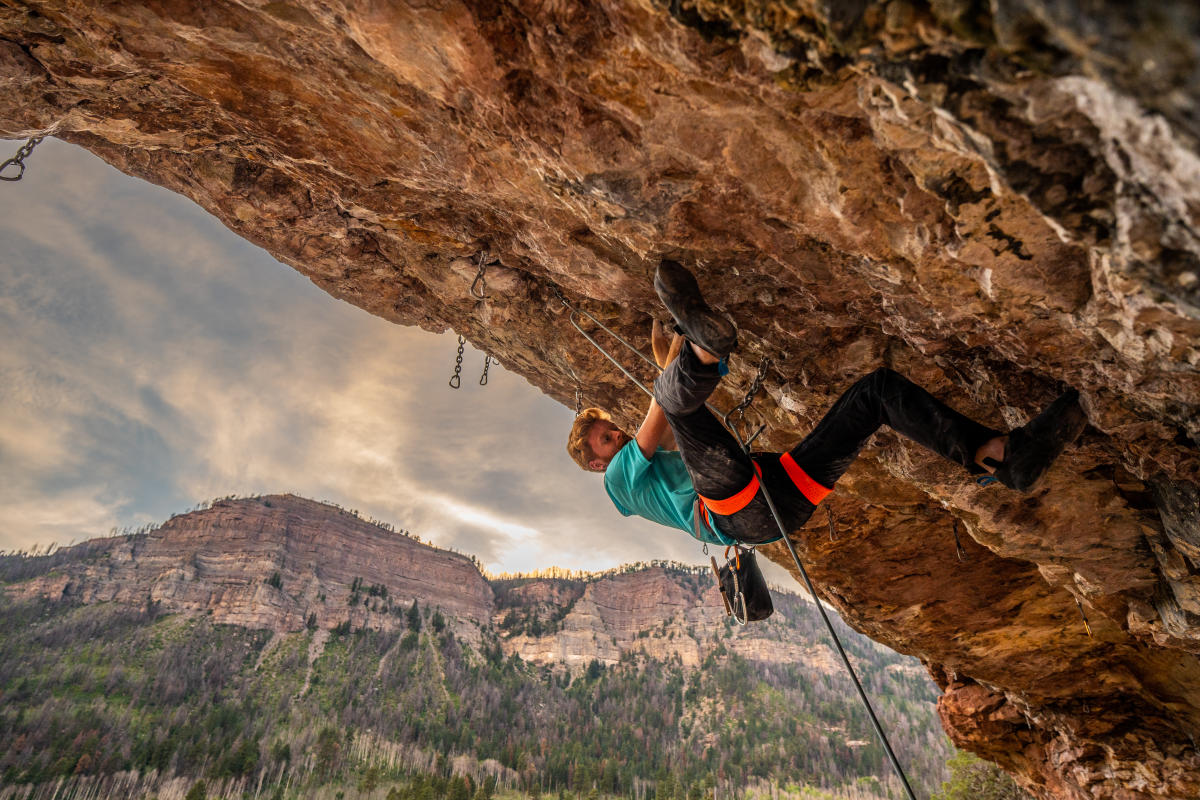
If all you want out of climbing is a selection of purely sport climbs, Durango has a nearby wall for those as well.
For those who don't know, sport climbing is a form of climbing using permanent anchors to keep ropes attached that you can use to climb up faces.
Just above the Glacier Club golf course outside of Durango is a steep limestone cliff ideal for sport climbs. With various routes of varying difficulties, this cliff gets to the heart of sport climbing.
Gravity Lab
Gravity Lab climbing gym in Durango, Colorado, is a haven for rock climbing enthusiasts. Nestled in Durango's southern business park, this state-of-the-art facility offers climbers of all levels a thrilling experience. With diverse routes, friendly staff, and top-notch safety measures, it's the perfect spot to challenge yourself and immerse in the climbing community.
Hermosa
The Hermosa climbing area is one of the most adventurous yet arduous areas to climb locally. There rests a wall roughly 80 feet in height and almost 300 yards long with a mix of rock types, starting with shale before turning primarily to the sandstone the area is known for.
The routes towards the Hermosa pinnacle up the rock face have been in development since 1988 by local climbers. But this is not a climbing area for beginners with the amount of sheer vertical climbs and overhangs. If you aren't confident in your gear and skills, take extra precautions on your ascent.
Things to Know About Rock Climbing in Durango
-
If you are looking for a cheaper way to get into climbing, start with bouldering. All bouldering requires is a good pair of shoes and a large rock.
-
The climbing season in Durango is mostly from spring to fall. Summer can get too hot sometimes, and the winter is cold and potentially icy. Some climbs, however, can be done year-round without too many complications.
-
Bring plenty of water; climbing is strenuous and will dehydrate you, so remember to hydrate as needed.
-
Climbing can be dangerous, so take the same precautions you would for a more extended camping trip. Tell others where you will be and when you should be back.
Care for Durango
-
Purchase a CORSAR card before going out into the backcountry.
-
Follow Leave No Trace (LNT) principles.
-
Do not engage with or feed the wildlife.
-
Practice proper trail etiquette.
-
Do not set new routes or leave permanent protection in the rock without approval from the land manager in charge of the area.
